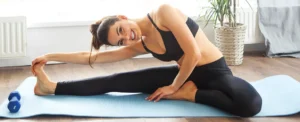The Complete Guide to Exercise: Science, Benefits & Sustainable Practices
Exercise is the cornerstone of physical and mental well-being, but with overwhelming information available, it’s easy to feel lost. Whether you’re a beginner or a fitness enthusiast, this guide breaks down the essentials of exercise types, benefits, common mistakes, and how to build a personalized routine for lifelong health.

1. The Science of Exercise: How Movement Transforms Your Body
A. Physiological Benefits
- Cardiovascular Health: Aerobic exercise (running, swimming) strengthens the heart and improves circulation.
- Muscle & Bone Density: Resistance training (weightlifting, bodyweight exercises) prevents sarcopenia (muscle loss) and osteoporosis.
- Metabolic Boost: HIIT (high-intensity interval training) enhances insulin sensitivity and fat oxidation.
B. Mental Health Benefits
- Endorphin Release: Reduces stress and anxiety (e.g., “runner’s high”).
- Neuroplasticity: Aerobic exercise promotes brain-derived neurotrophic factor (BDNF), aiding memory and learning.
- Sleep Quality: Regular activity regulates circadian rhythms for deeper sleep.
2. Types of Exercise & Their Unique Advantages
| Type |
Examples |
Best For |
| Aerobic |
Running, cycling, dancing |
Heart health, endurance, calorie burn |
| Strength |
Weightlifting, resistance bands |
Muscle growth, joint stability |
| Flexibility |
Yoga, Pilates, dynamic stretching |
Injury prevention, mobility |
| Balance |
Tai Chi, single-leg stands |
Fall prevention (especially for seniors) |
3. Crafting Your Personalized Routine
A. For Beginners
- Start with 3 days/week (e.g., 20-min walk + bodyweight squats).
- Gradually increase intensity (10% rule: don’t ramp up volume/duration by >10% weekly).
B. For Weight Loss
- Prioritize NEAT (non-exercise activity thermogenesis, like walking more) + strength training to preserve muscle.
C. For Busy Schedules
- Micro-workouts: 5-min bursts (e.g., desk stretches, stair climbs) add up.
4. Common Mistakes to Avoid
- Overtraining: Signs include fatigue, insomnia, or plateauing. Rest days are crucial.
- Poor Form: Risk of injury (e.g., rounded back during deadlifts). Consider a trainer for technique.
- Neglecting Recovery: Foam rolling, hydration, and protein intake optimize muscle repair.
5. Motivation & Long-Term Adherence
- Habit Stacking: Pair exercise with an existing routine (e.g., post-coffee walk).
- Social Accountability: Join a class or find a workout buddy.
- Track Progress: Use apps or journals to celebrate small wins (e.g., lifting heavier or walking farther).
When to Consult a Professional
- Persistent pain during/after exercise.
- Designing programs for specific goals (e.g., marathon training).
- Managing conditions like arthritis or hypertension.
Final Thoughts
Exercise isn’t just about aesthetics—it’s a celebration of what your body can do. Listen to its signals, embrace variety, and remember: consistency trumps intensity. Even a 10-minute daily movement can yield profound benefits over time.
